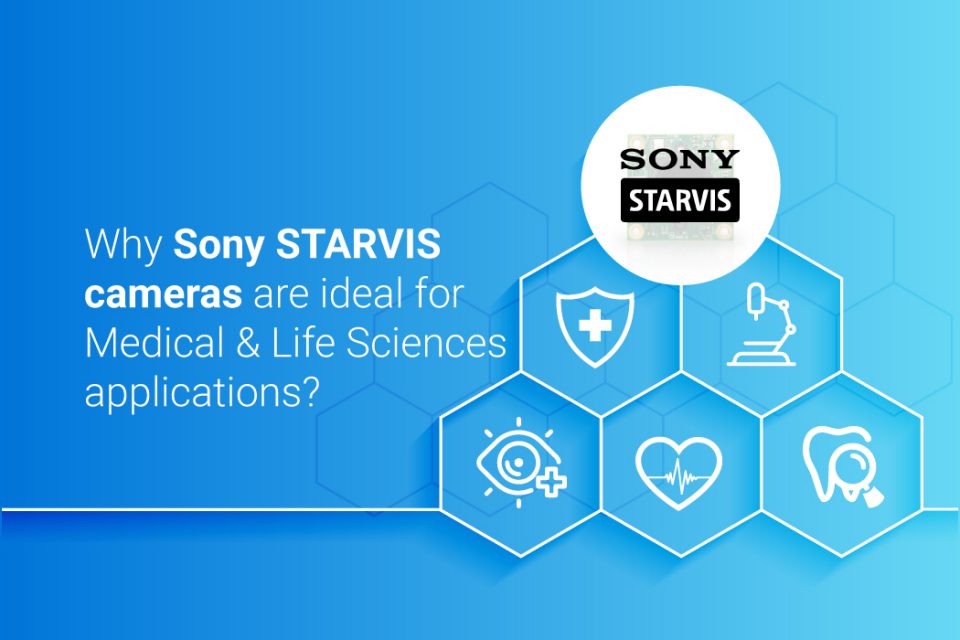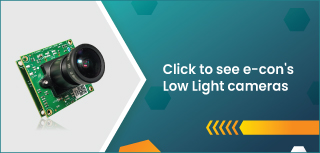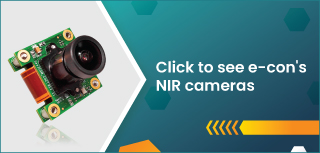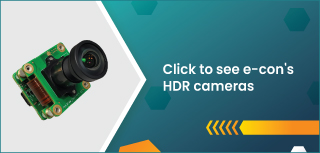Powered by MedTech technologies, traditional diagnosis and treatment procedures are becoming less invasive and more effective. Medical practitioners are able to extract information on the patients’ conditions much faster with the ability to apply artificial intelligence to diagnosis and treatment methodologies. In some cases, patients can even be monitored in the comfort of their own homes instead of being physically present at the hospital.
Imaging technology advancements have played a vital role in achieving these breakthroughs in medical and life sciences industries.
You may already be aware that medical professionals heavily rely on imaging-based diagnoses. Though medical imaging typically refers to techniques like X-rays and scans, embedded cameras have been finding their way into medical procedures by helping capture detailed images of the eye, blood samples, the skin, urine samples, etc. In addition, they can examine inner structures that are invisible to the human eye and make informed treatment and monitoring decisions.
Given that a lot of these medical devices have to operate in challenging lighting conditions, an ordinary camera system doesn’t work in many cases. Specialized medical cameras have to be chosen that can capture even the minute details of the target object irrespective of how well-lit the environment is.
The Sony STARVIS series of cameras is known for its excellent low-light performance. In today’s blog, let’s go deeper into the medical and life sciences applications of camera-enabled systems, the camera-related features of these applications, and see how Sony STARVIS camera modules can help enhance their performance.
Need for camera-based applications in medical and life sciences
Cameras are a vital part of key processes in the medical industry – from diagnosis and treatment to post-surgery and home care. Some of their major use cases include:
- Dentistry: Dental cameras are used in intra-oral, extra-oral, and loupe devices – helping examine the patient’s mouth and displaying information to educate and diagnose them.
- Ophthalmology: Ophthalmology cameras examine the interior features of the eyes, such as retinas, optic nerve heads, maculae, and blood vessels using devices such as retina scanners and fundus cameras.
- Dermatology: Skin cameras analyze pigmented skin lesions, diagnose melanoma, and examine skin structures and patterns.
- Surgery: Medical cameras are utilized to produce still and video pictures in the surgical field to get a detailed view of the patient’s inner structure during surgery. Embedded cameras also find their applications in robotic surgery.
In the life sciences industry, embedded vision applications address a variety of research needs. Some of these use cases include Cancer Research, Developmental Biology, Drug Discovery, Fluorescence, Live Cell Imaging, Molecular Cell Biology, Neuroscience Imaging, and Regenerative Medicine.
Key imaging features of Medical and Life Sciences cameras
There is no one-size-fits-all camera solution for medical and life sciences applications. Instead, each application has its own set of requirements, as their expectations range from entry-level educational cameras to high-end ones with AI capabilities capable of monitoring patients remotely, that too in extreme low light.
For example, on the one hand, microscope and lab equipment cameras require features like high resolution, small pixel size, and small form factor, etc. On the other hand, in a macro-imaging camera for intraoral or skin analysis, working distance, aperture size, FoV (Field of View), and DoF (Depth of Field) come into play. Other important camera parameters are frame rate, interface, power consumption, and longevity – depending on the use case.
However, there are a few common sensor parameters that ought to be considered by most medical device manufacturers, namely:
- High sensitivity
- Near-Infrared (NIR) performance
- High Dynamic Range (HDR)
As mentioned earlier, every application’s camera needs are unique, and a camera solution has to be picked accordingly. It is recommended to take the help of an imaging partner like e-con Systems which has worked with numerous medical device manufacturers to integrate state-of-the-art medical cameras into their medical devices.
Why Sony STARVIS cameras are a great choice for medical and life sciences applications
Getting clear and sharp images across different lighting conditions, particularly in low-light scenarios, is a fundamental need for many medical and life sciences applications. Therefore, their cameras should perform effectively in low-light circumstances to clearly see the textures of the targets while capturing them in low light.For instance, Sony’s image sensors using the STARVIS technology have significantly better sensitivity than the human eye. STARVIS is a back-illuminated pixel technology for CMOS image sensors that have been developed for a variety of camera applications. They have a sensitivity of 2,000 mV/m2 (color product and when imaging with a light source of 706 cd/m2, F5.6 in 1s accumulation equivalent) and give excellent image quality in visible and near-infrared light.
(To learn more about the differences between some of the most popular Sony sensor series, please have a look at the article Sony Exmor vs STARVIS sensors; a detailed comparison)
STARVIS 2 has a greater dynamic range (AD 12bit) than a STARVIS pixel of the same size, with more than 8 dB in a single exposure.
Achieving high sensitivity
Back-illuminated image sensors collect more light onto the photodiodes without getting affected by wiring or circuits – leading to higher sensitivity. Hence, the pixels created specifically for medical applications can record sharp images in low light – capturing what human eyes and traditional cameras are unable to see. Such details include the colors and shapes of objects, textures, and even printed figures on a scale.
Have a look at the below illustration to understand the difference between the front-illuminated and back-illuminated pixel technologies: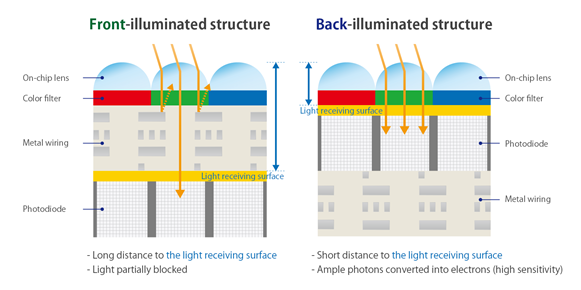 Figure 1 – Advantages of the back-illuminated structure
Figure 1 – Advantages of the back-illuminated structure
Source: Sony
The below image shows the comparison of outputs taken using an ordinary camera and a Sony STARVIS camera at the following conditions:
Type 1/2.8, F=1.4, exposure = 1/60s, frame rate of 30 fps, gain = 48dB, with IRCF.
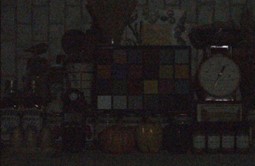

Figure 2 – Performance comparison in low illuminance environment (illuminance 0.08 lx)
Source: Sony
Enabling Near-Infrared (NIR) performance
While conventional cameras need to shoot in visible light, medical and life sciences cameras may need to capture images in the near-infrared (NIR) light spectrum. All current Sony STARVIS image sensors come with a high-quality NIR imaging feature that allows NIR radiation in complete darkness. While Sony is still improving the NIR function, the latest model offers higher imaging performance and reduced noise than its predecessors. The NIR-compatible image sensors with STARVIS technology can capture key details under the lighting condition of 0 lx at 850 nm of the NIR spectrum. For instance, See3CAM_CU27 – Sony STARVIS IMX462 ultra low light USB camera from e-con Systems – comes with excellent sensitivity in the NIR spectrum.
The below image illustrates the difference between the output taken using a normal camera and a STARVIS camera with NIR performance at the following conditions:
F=1.6, exposure = 33.3msec, gain = dB, wavelength = 850 nm.
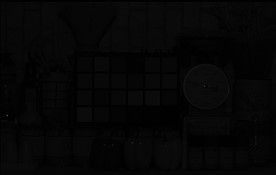
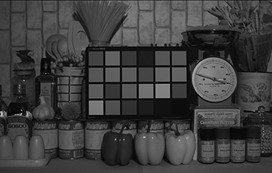
Figure 3 – Comparison of output between normal camera and STARVIS camera in NIR spectrum
Source: Sony
At the same time, the below image shows the comparison of quality obtained from the old and new generations of STARVIS sensors.
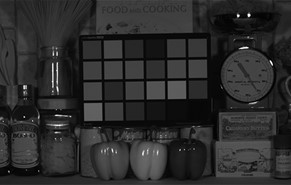
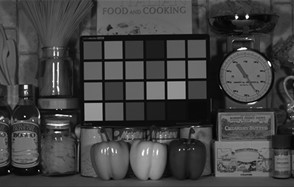
Figure 4 – Comparison between the conventional and new versions of STARVIS sensors in NIR spectrum
Ensuring High Dynamic Range (HDR)
Cameras used for many embedded vision applications – especially outdoor applications – must adjust to changing illumination conditions and/or changes in the area. If the scene has sections that are both too bright and too dark, the bright region may be overexposed while the dark region gets blacked out. With the High Dynamic Range (HDR) feature, it becomes easy to adjust the exposure duration or gain to avoid blowout or blackout – ensuring that the objects in both regions are captured clearly. Please have a look at the below image to understand the concept better:
 Figure 5 – Blowout reduction using HDR feature
Figure 5 – Blowout reduction using HDR feature
Bottom-line
The need for imaging efficiency and accuracy will continue to rule the roost as the primary camera requirements of medical and life sciences applications. So, vision and camera sensors should evolve in parallel – providing more reliability and higher performance. Sony STARVIS CMOS sensors tend to be the best choice in a vast majority of embedded vision use cases as they effortlessly equip your applications with game-changing capabilities. It also offers additional features like reduced noise, ultra-high sensitivity, and higher and more reliable image quality.
e-con Systems’ recommended Sony STARVIS cameras for medical and life sciences applications
Following is the comprehensive list of Sony STARVIS camera modules offered by e-con Systems
- e-CAM86_CUMI715C_MOD – Sony® STARVIS™ IMX715 Low light Camera Module
- e-CAM83_CUMI415_MOD – Sony® STARVIS™ IMX415 Low light Camera Module
- e-CAM84_CUMI485C_MOD – Sony® Starvis™ IMX485 Ultra-Lowlight Camera Module
- e-CAM87_CUMI585_MOD – Sony® Starvis™ IMX585 Ultra-Lowlight Camera Module
- e-CAM220_CUMI327_MOD – Full HD Sony® Starvis™ IMX327 Ultra-Lowlight Camera Module
- e-CAM221_CUMI462_MOD – Sony® Starvis™ IMX462 Ultra-Lowlight Camera Module
- e-CAM21_CUMI290_MOD – 2MP Sony® STARVIS® IMX290 ultra-lowlight Camera Module
- e-CAM120_CUMI412C_MOD – Sony® Starvis™ IMX412 Camera Module
We hope that this article gave you an understanding of why Sony STARVIS cameras are the solution of choice for many camera-based medical devices. If you are looking for an expert to help you integrate world-class cameras into your medical or life sciences devices, please write to us at camerasolutions@e-consystems.com.
To have a look at the medical cameras we offer and applications we support, please visit the medical cameras page. You can also visit the Camera Selector page to view our full portfolio of cameras.
We’ll be back with more market insights next Monday!

Balaji is a camera expert with 18+ years of experience in embedded product design, camera solutions, and product development. In e-con Systems, he has built numerous camera solutions in the field of ophthalmology, laboratory equipment, dentistry, assistive technology, dermatology, and more. He has played an integral part in helping many customers build their products by integrating the right vision technology into them.




